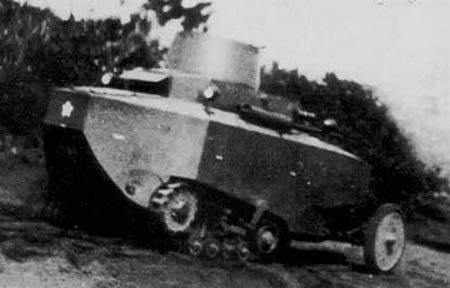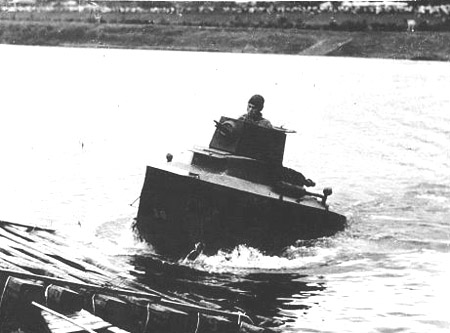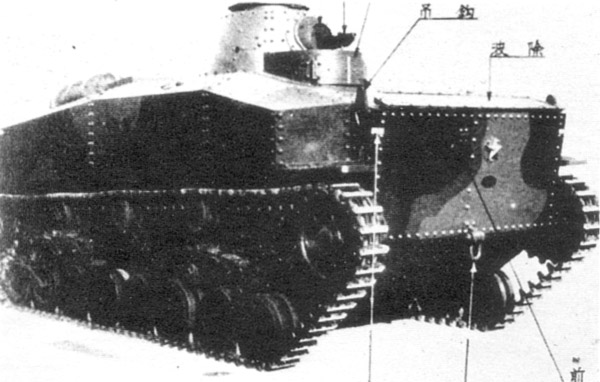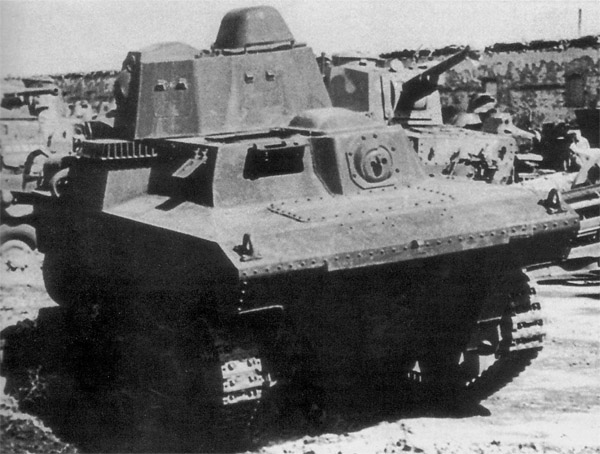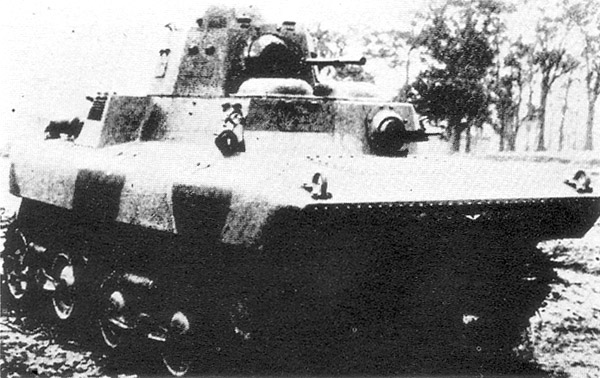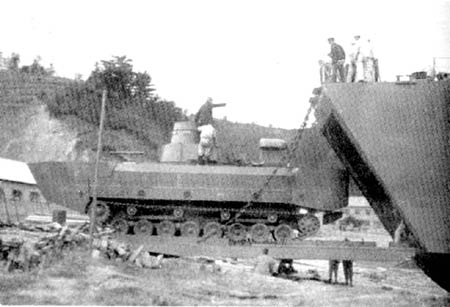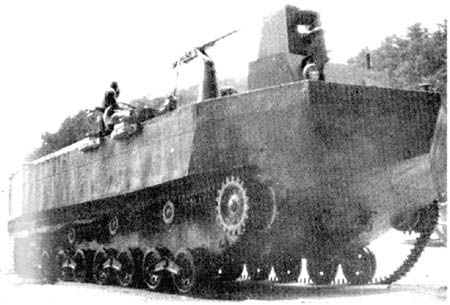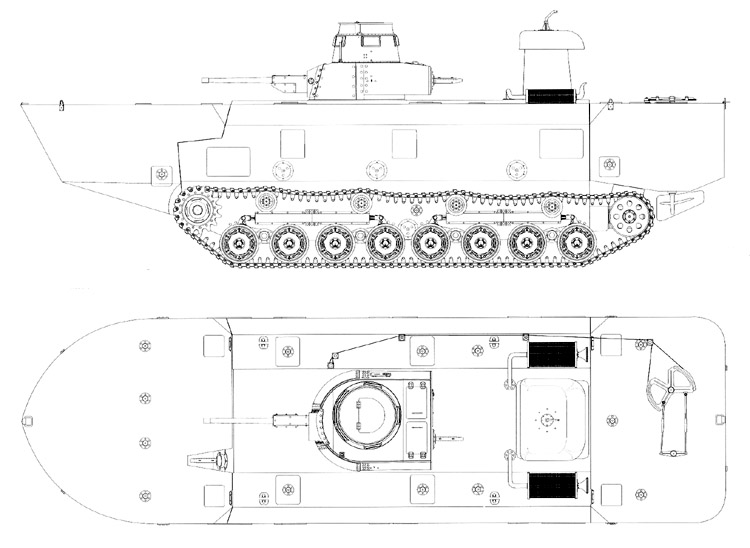Hi.
- The type 2 amphibious tank Ka-Mi
In the late thirties the japanese Navy decided to develop amphibious tanks for the Special Naval Langing Forces. Basic recommendations were the use of a type 98 37 mm tank gun and the tanks should reach the beaches departing directly from the transport vessels ashore or from nearby islands. So the tanks had to be somewhat seaworthy.
Based on the SR-III-design Mitsubishi built a new vehicle with a simplified superstructure and the suspension of the type 95 light tank Ha-Go. The floats were removed increasing the size of the fighting compartment. A front and a rear pontoon were installed. All three part together (rear pontoon, tank and front pontoon) were building a stable boat-shaped sea-going vehicle retaining stabillity even in in a rolling sea.
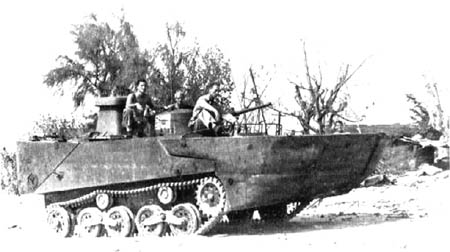
The pontoons could easily be removed by simly pulling two wires operating quick-release locks. The pontoons could be refitted in 15 minutes.
The large frontal pontoon consisted of two symetrical sections with 3 compartments each. This ensured flotability even if the pontoon was hit. The capacity was 6,2 m³. The pontoon could be broken along the center line to allow the tank to move on if the landing zone didn´t allow to maneuver.
The rear pontoon consisted of 5 compartments with a total capacity of 2,9m³. The tank was propelled afloat by two 500 mm propellers below the rear pontoon and steered by a single rudder between the propellers.
For the use in heavier sea a chimney-style extension could be installed above the engine air intakes and a conical turret extension for better sight
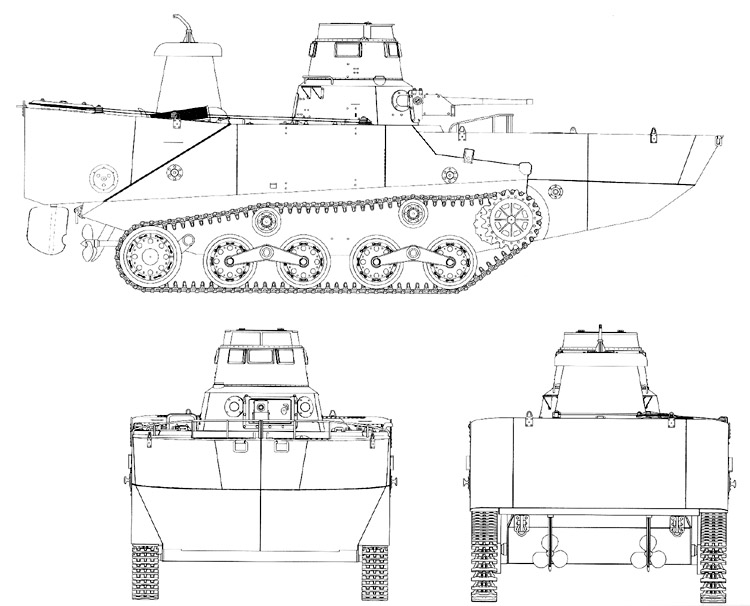
The first prototype showed some problems which were solved quickly and in 1941 the serial production started. Major problems regarding the steering were solved in 1942 and from late 1942 an improved version with two steering rudders, improved armour and radio equipment was produced.
The weight was 13,2/8t with an armour strength between 6 and 16 mm.
The crew of five men consisted of driver, bow gunner, mechanic, loader and commander/gunner/skipper. The armament consisted of a type 97 7,7 mm tank maschine gun on the left in the bow and a type 98, later type 1 37 mm tank gun in the slightly conical turret.
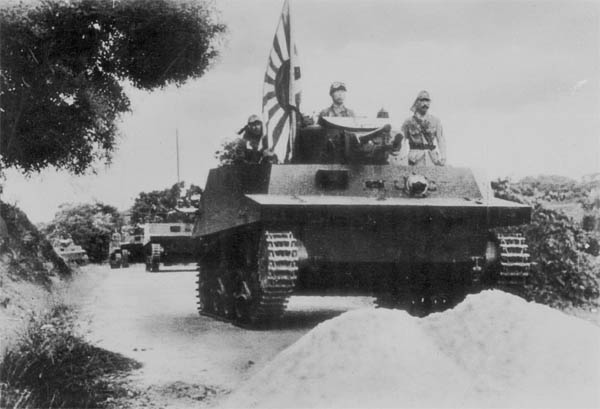
As the pontoons extension formed a large overhang the target beaches had to be gently sloping and wide.
The Tanks were used in tank companies attached to the SNLF-bases. The tank doctrine was similar to the one used by the Army (infantry support and fast armoured recon). The tanks were used on Saipan, New Ireland, Rabaul and the Philippines. In October 1944 the 101st SNLF started an amphibious assault on Leyte causing much trouble among the US troops after landing behind the enemy lines.
To be continued
Yours
tom! 
